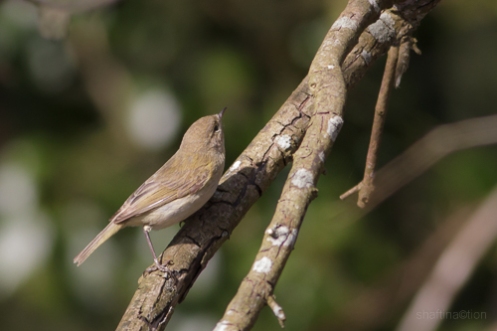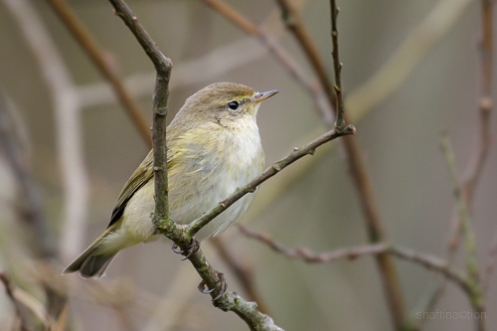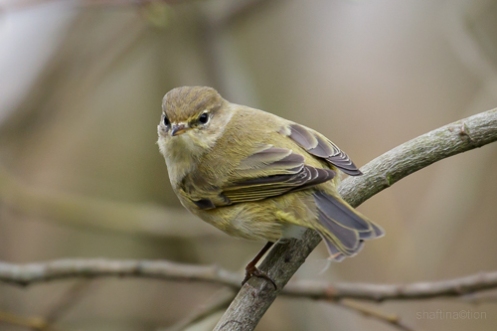No Flies on a Chiffchaff
Like most people, I love this time of year, when the birds start singing their hearts out. One particular song that stands out for me is the metronomic notes of the Chiffchaff. I get a warm feeling inside when I hear my first one of the year and as of today I’ve heard a dozen or more in the last week or so. I have seen it written that Chiffchaff only sing on trees 5 metres or higher, but I’ve observed them singing on much lower branches just above my head, which is a real treat until they realise you are standing right below them.
The Chiffchaff (Phylloscopus collybita) is an unremarkable looking Warbler, dressed in olive and brown on top along with off-white underparts and arrives in the early springtime to belt out its song in measured phrases. The song goes “chiff, chaff, chiff, chaff, chiff, chaff’ after its name and appears to only come down from the canopy to feed on insects and flies, and have a nose at who’s stalking it from below (usually me). They always seem to be flicking their wings or tail as they hunt for food and they sometimes hover to pick off insects and butterfly eggs from hard to reach places, like the underside of a leaf.

They sometimes hover to pick off insects and butterfly eggs from hard to reach places, like the underside of a leaf.
I said they ‘arrive’ in the early springtime, but that’s not 100% true. There are an increasing number of resident birds that simply don’t leave us at all. They spend the winter here as well, usually somewhere in the south. I’m sure, at the onset of spring these cagey individuals have the hop on their migrant counterparts, not having to fly all the way from the Mediterranean, or even worse, the Sub-Sahara and presumably are in much better shape to get paired up and establish a nest site much earlier.
Chiffchaffs appear to be quite sharp in other ways too. Apparently, Cuckoos sometimes use the Chiffchaff’s nest to lay their egg, but the Chiffchaff can usually spot the offending soon-to-be-thug from their own eggs and eject it, making the Cuckoos’ success much lower. Maybe the Cuckoo only does this when it cannot find a more suitable host nest. A neat piece of detective work on the Chiffchaff’s part.
Now, a friend lent me a book recently. This was before all the lovely Chiffchaffs had arrived and it’s been sitting on my desk waiting for me to open its pages. While reading up on the humble Chiffchaff for some further information I discovered that one Gilbert White was one of the first people to identify Chiffchaff from Willow Warblers by their songs. These two birds look remarkably similar but their songs aren’t. Apparently he wrote a book called ‘The History and Antiquites of Selbourne’ in 1789 which did rather well and has been in print ever since. The title of the book sounded familiar, as did the Author and I looked over to the book on my desk and there it was, ‘A History of Selborne’, ‘Gilbert White’. What are the odds? I know what I’ll be reading in bed tonight.





